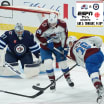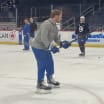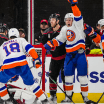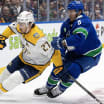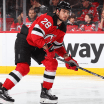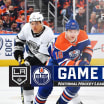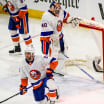It's easy to see how practicing yoga, with its emphasis on flexibility and balance, could be beneficial to any goaltender. But Carey Price of the Montreal Canadiens planned to take it to another level this season by going barefoot.
Just like yoga students often are encouraged to spread their toes for better balance and a better foundation when doing poses, Price believed that taking off his socks in his skates did the same on the ice.
Goaltenders adding yoga to in-season workout regimen
Carey Price of Canadiens considering going barefoot in skates for better grip, similar to poses on mats
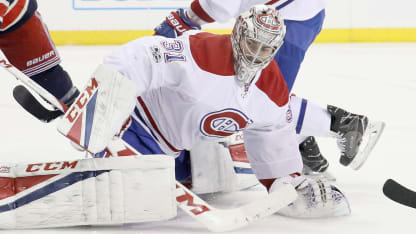
© Paul Bereswill/Getty Images

